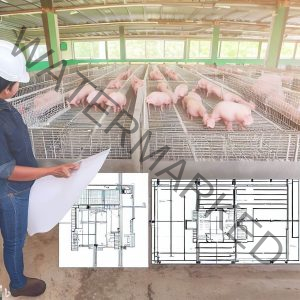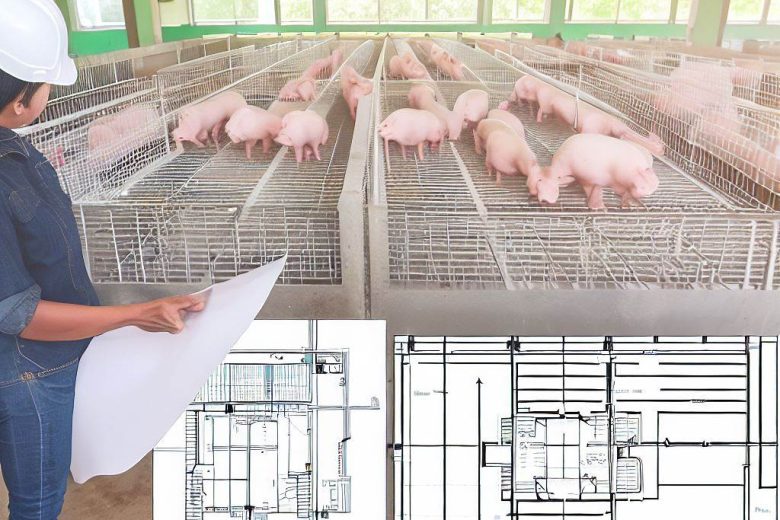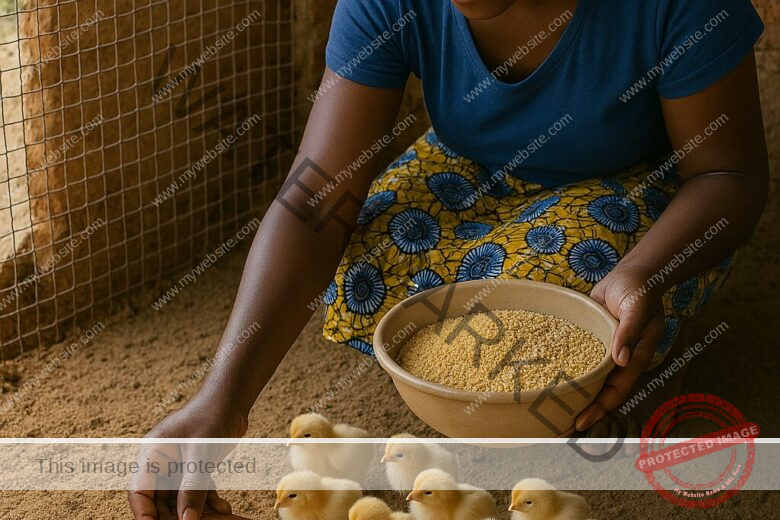When it comes to raising pigs, providing a safe and comfortable environment is crucial for their well-being and growth. Building a pig pen with hog panels is an excellent choice for beginners, as it offers a practical and cost-effective solution.
To build a pig pen with hog panels, start by selecting a suitable location and laying the foundation with secure fence posts. Then, install the hog panels securely to create a sturdy enclosure that provides a safe and comfortable environment for your pigs.
Before diving into the construction process, it’s essential to understand why a well-designed pig pen matters. A suitable enclosure provides protection from predators, extreme weather conditions, and ensures that your pigs are content and stress-free, leading to healthier animals.
In this guide, we will take you through the step-by-step process of creating a pig pen that ensures your pigs’ comfort, safety, and allows you to manage them efficiently.
DIY Guide On How to Build a Pig Pen with Hog Panels

Step 1: Choosing the Right Location
Selecting the right location for your pig pen is crucial. The area should be well-drained to avoid waterlogging and should have adequate sunlight for the pigs to bask in. Additionally, consider the proximity to your house or barn for convenient access.
Read Also: [Beginner’s Guide] How To Build A Pig Pen With Pallets
Step 2: Gathering the Necessary Tools and Materials
To start building your pig pen, gather all the necessary tools and materials. You will need hog panels, fence posts, a hammer, nails, measuring tape, and a saw. Ensure that the materials are of good quality to make the pen sturdy and long-lasting.
Step 3: Designing the Layout
Plan the layout of your pig pen before proceeding with the construction. Decide on the dimensions, shape, and whether you want an enclosed shelter within the pen. Having a clear plan in mind will make the building process more efficient.
Read Also: [Beginners Guide] How To Formulate Pig Feed
Step 4: Setting Up the Foundation
Begin the construction by setting up the foundation of the pig pen. Dig holes for the fence posts and firmly secure them in the ground. This step provides the necessary stability for the entire structure.
Step 5: Installing the Hog Panels
Next, it’s time to install the hog panels. Attach them to the fence posts securely using nails or other appropriate fasteners. Hog panels are ideal for pig pens as they are strong, durable, and allow good airflow.
Read Also: [Beginners guide] How To Formulate Pig Feed in the US
Step 6: Building the Shelter
If you decide to include a shelter within the pen, construct it using the same materials as the pen itself. The shelter will provide a cozy space for your pigs to rest and protect them from harsh weather conditions.
Here Is A Video Guide On How To Build A pig House With Hog Panel And All You Need To Know
Step 7: Adding Gates for Access
Incorporate gates into the design to ensure easy access to the pig pen. Gates also aid in the smooth movement of pigs in and out of the enclosure, making feeding and management more convenient.
Read Also: Poultry House Plan Design Pdf [A-Z Building Plan]
Step 8: Ensuring Safety and Security
Check for any sharp edges or potential hazards within the pen and shelter. Ensure there are no gaps or openings that could lead to accidents or allow predators to enter. The safety of your pigs should always be a top priority.
Step 9: Providing Adequate Water and Food Stations
Install water and food stations within the pen to keep your pigs well-nourished. Regular access to clean water and a balanced diet is vital for their health and growth.
Read Also: 12 Requirements To Start A Poultry Farming Business
Step 10: Maintaining the Pig Pen
Regular maintenance is essential to keep the pig pen in optimal condition. Clean the enclosure regularly, check for any damages, and make repairs as needed.
How much space do I need for a pig pen?
The space required depends on the number and size of pigs you plan to raise. As a general guideline, allocate at least 50 square feet per pig.
Read Also: 12 Tips On How to Build a Pig Pen Successfully
Can I use other materials instead of hog panels?
While hog panels are a popular choice, you can use other materials like wooden boards or welded wire mesh. Ensure they are sturdy enough to withstand the pigs’ weight and behavior.
Read Also: [Beginners Guide] How To Build A Pig Pen For Large & Small Farms
How can I prevent odors from the pig pen?
Regular cleaning and proper waste management are crucial to prevent odors. Consider composting the manure for an eco-friendly solution.
Read Also: 14 Cheapest Way To Build A Pig Pen
How high should the fence be?
The fence should be at least 3 to 4 feet high to prevent the pigs from escaping.
What breed of pigs is suitable for beginners?
Some beginner-friendly pig breeds include Yorkshire, Hampshire, and Duroc.
How High Does a Hog Pen Need to Be?
When building a hog pen, one of the essential considerations is determining the appropriate height for the enclosure. The height of the hog pen is crucial in preventing the pigs from escaping and ensuring their safety. As a general rule of thumb, the fence should be at least 3 to 4 feet high. This height is usually sufficient to contain most pig breeds and prevents them from jumping or climbing over the fence.
However, there are a few factors to consider that might influence the ideal height for your hog pen:
Pig Breed:
Some pig breeds are more agile and can jump higher than others. If you are raising a particularly active or large breed, you may want to consider increasing the fence height accordingly.
Terrain and Surroundings:
Take note of the terrain and the surroundings of the pig pen. If the pen is located on elevated ground or near objects that pigs could use as a boost to jump over, it might be wise to add extra height to the fence.
Predator Prevention:
If the area is known for having potential predators that could threaten your pigs, raising the fence height can help deter them from attempting to enter the pen.
In conclusion, while the general height of 3 to 4 feet is sufficient for most hog pens, considering the specific factors mentioned above will ensure a secure and effective enclosure for your pigs.
What is the Best Material for a Pig Pen?
Selecting the right material for your pig pen is crucial to ensure its durability, safety, and overall functionality. There are various materials available, each with its advantages and disadvantages. The best material for a pig pen will depend on your specific requirements and budget. Here are some common options to consider:
Hog Panels:
Hog panels are a popular choice for building pig pens. They are sturdy, durable, and provide excellent visibility for monitoring the pigs. The panels’ design also allows for good airflow, creating a comfortable environment for the pigs.
Welded Wire Mesh:
Welded wire mesh is another viable option, especially for smaller pigs. It provides a secure barrier and is more cost-effective than hog panels. However, it may not be as durable in the long run.
Wooden Boards:
Wooden boards can be used to construct a solid and robust pig pen. They offer privacy and protection from wind and weather. However, wood may require more maintenance over time.
Chain Link Fencing:
Chain link fencing is a versatile option that provides security and visibility. It is suitable for larger pig pens and can withstand the pigs’ weight and behavior.
Concrete Walls:
For commercial or permanent setups, concrete walls offer excellent durability and protection. They are easy to clean and maintain, making them a hygienic choice.
When choosing the material for your pig pen, ensure it meets your pigs’ specific needs, climate conditions, and fits within your budget.
What Do You Put on the Floor of a Pig Pen?
The flooring of a pig pen plays a significant role in maintaining cleanliness, preventing disease, and ensuring the pigs’ comfort. The ideal floor should be sturdy, easy to clean, and provide good drainage. Here are some common flooring options for pig pens:
Dirt/Gravel Flooring: Dirt or gravel floors are simple and cost-effective options. However, they require regular maintenance and might not provide the best drainage.
Concrete Flooring: Concrete floors are easy to clean, provide excellent drainage, and are durable. They are particularly suitable for farrowing areas and pens with heavy pig traffic.
Wire Flooring: Wire flooring allows for easy waste removal and good ventilation. However, it might not be the most comfortable option for the pigs to walk on, especially if they are on it for extended periods.
Slatted Flooring: Slatted floors have gaps between the slats, allowing waste to fall through, keeping the surface cleaner. They provide good traction for the pigs’ feet and are commonly used in commercial pig farming.
Bedding Materials: Regardless of the type of flooring, providing appropriate bedding materials, such as straw or wood shavings, is essential for the pigs’ comfort and to control odors.
Remember that a combination of factors, including the pig’s age, size, and specific requirements, will influence the best flooring choice for your pig pen. Regular cleaning and maintenance are crucial to ensure a healthy and hygienic environment for your pigs.
Conclusion
Building a pig pen with hog panels is an achievable task for beginners and a rewarding investment in the well-being of your pigs. By following this guide, you can create a safe, comfortable, and efficient enclosure that will support your pigs’ growth and health. Remember to prioritize safety, provide adequate food and water, and maintain the pen regularly to ensure a successful pig-raising experience.





One Reply to “How to Build a Pig Pen with Hog Panels [Beginner’s Guide]”